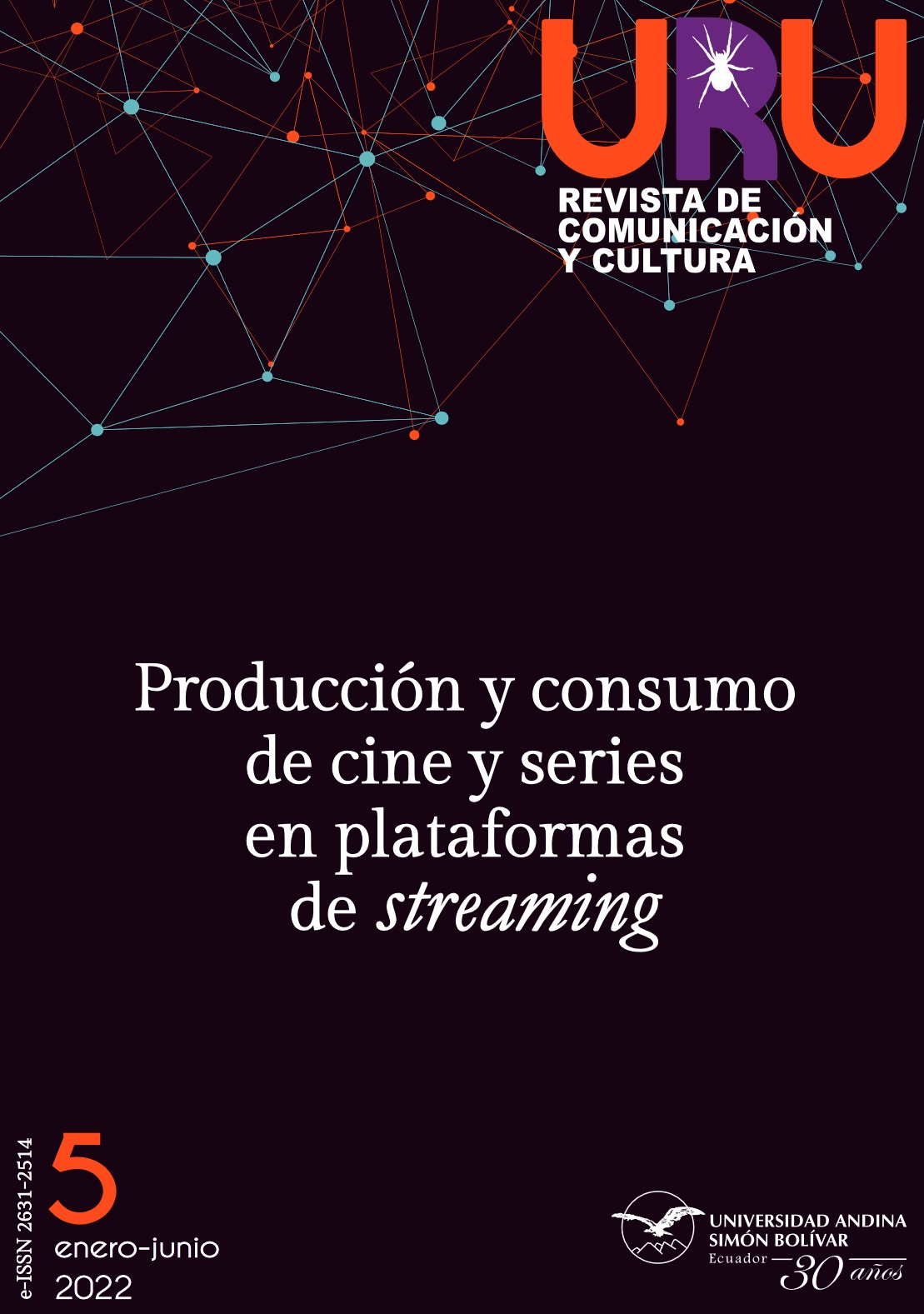Audiencias digitales, recepción de la idea de cine ecuatoriano
DOI:
https://doi.org/10.32719/26312514.2022.5.7Palabras clave:
Cine ecuatoriano, recepción, audiencias digitales, dramaResumen
La idea de cine ecuatoriano se ha discutido y debatido en los sectores cinematográficos, donde se coincide en que no se trata de un género o un concepto unívoco. Pero desde la visión de las audiencias y consumidores se pone en crisis tal idea. El presente estudio de recepción hace foco en la relación que las audiencias digitales tienen con el cine ecuatoriano, sus interpretaciones y los imaginarios que elaboran. Pese al surgimiento de plataformas que agrupan una serie de títulos de producciones locales, los sujetos consultados desconocen estos espacios. Identifican y señalan al cine ecuatoriano como una expresión de la diversidad, de un crecimiento en talento y calidad técnica, pero con temáticas recurrentes vinculadas al drama, la tristeza y la problemática social, sin creatividad desde los guiones, con falencias en las actuaciones y carencia de recursos. Es un cine invisible que carga con prejuicios.
Descargas
Referencias
Del Alcázar, Juan Pablo. 2021. “Estado digital Ecuador: Julio 2021”. Mentinno. 7 de julio.
Estrella, Santiago. 2017. Miradas a la identidad nacional en el filme “Qué tan lejos”. Quito: UASB-E / Corporación Editora Nacional.
Hamui, Alicia, y Margarita Varela. 2013. “La técnica de grupos focales”. Investigación en Educación Médica 2 (5): 55-60. DOI: https://doi.org/10.1016/S2007-5057(13)72683-8
López, Pedro, y Sandra Fachelli. 2015. Metodología de la investigación social cuantitativa. Barcelona: Universitat Autònoma de Barcelona.
Marín, Martha, Gonzalo Rivera, y Germán Muñoz. 1994. “Análisis de recepción de cine en Bogotá: Identidades culturales e imaginarios colectivos”. Nómadas 1.
Mayora Ronsini, Veneza, Denise Cogo, y Jerónimo Repoll. 2014. “Presentación”. En Estudos de recepção latino-americanos: Métodos e práticas, coordinado por Veneza Mayora Ronsini, Denise Cogo y Jerónimo Repoll, 5-10. Barcelona: Universitat Autònoma de Barcelona.
Robles, Bernardo. 2011. “La entrevista en profundidad: Una técnica útil dentro del campo antropofísico”. Cuicuilco 18 (52): 39-49.
Solano, César Augusto. 2016. “La presencia de Narciso en el cine ecuatoriano reciente”. En Desafíos del pensamiento crítico: Memorias del Décimo Congreso Ecuatoriano de Sociología y Política. Tomo II, editado por Adrián López, Darío Terán y Francisco Hidalgo, 25-48. Quito: CLACSO. DOI: https://doi.org/10.2307/j.ctvt6rmf7.5
Tornero, Angélica. 2010. “Enfoques de la recepción en estudios de cine y literatura”. Inventio 6 (12): 78-85.
—. 2011. “Negaciones y negatividad en la estética de la recepción”. Inventio 7 (14): 38-46.
Publicado
Cómo citar
Número
Sección
Licencia
LicenciaLos autores/as que publiquen en esta revista aceptan las siguientes condiciones:
- Los autores/as conservan los derechos de autor y ceden a la revista el derecho de la primera publicación, con el trabajo registrado bajo Licencia Creative Commons 4.0 de Reconocimiento No Comercial-Compartir Igual 4.0, que habilita a compartir, adaptar y atribuir el trabajo (ver: Políticas de acceso abierto).
- Los autores/as pueden realizar otros acuerdos contractuales independientes y adicionales para la distribución del artículo publicado en esta revista (p. ej., incluirlo en un repositorio institucional o publicarlo en un libro) siempre y cuando indiquen claramente que el trabajo se publicó por primera vez en Uru. En caso de reproducción deberá constar una nota similar a la siguiente: Este texto se publicó originalmente en Uru: Revista de Comunicación y Cultura N° --, año de publicación.
- Se recomienda a los autores/as publicar su trabajo en Internet (por ejemplo en páginas institucionales o personales) en la versión final publicada por Uru: Revista de Comunicaicón y Cultura ya que puede conducir a una mayor y más rápida difusión del trabajo publicado.








